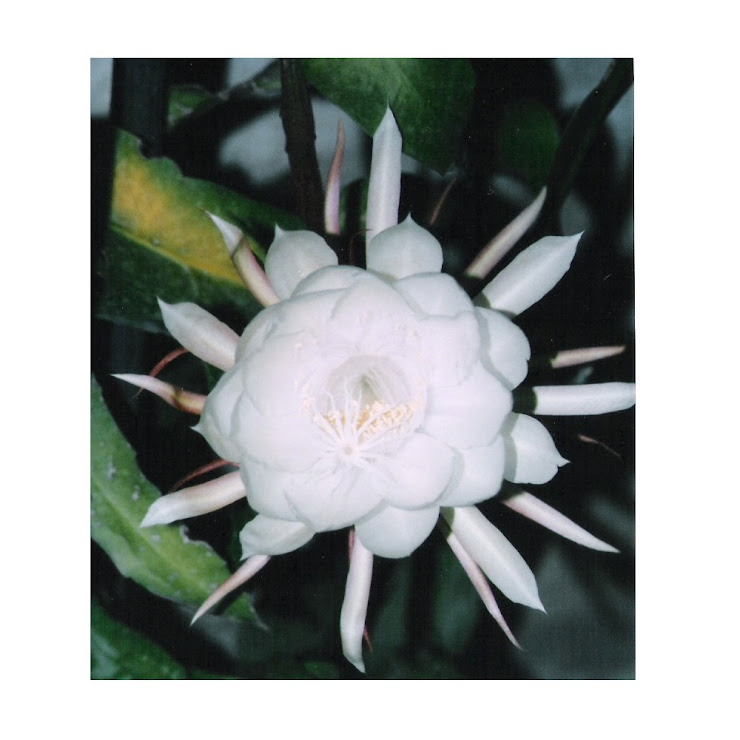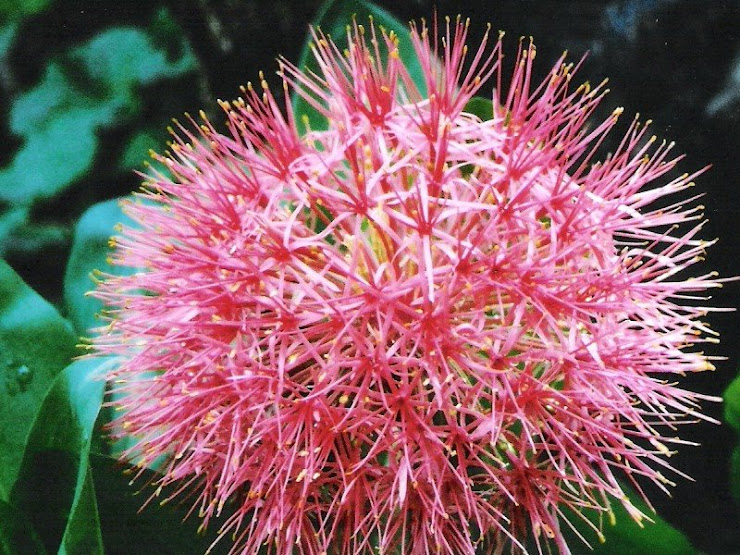


CHRYSANTHEMUMS IN YOUR GARDEN
Gardening has always been considered as an activity that brings out the
creativity in a person. The joy of achievements one enjoys when the flowers
bloom with vivid colours; it has no parallel.
Gardening keeps us in touch with the earth. the changing seasons and nature.
Chrysanthemums in south India are used in the worship of the Gods in the same
manner as we use Marigold. In Japan it enjoys being the national flower and is
also eaten as a health food.
Where and how to grow:
Chrysanthemums are best grown in beds and clay pots. They can also be grown
in groups to bring out the beauty of your garden. The bloom lasts for 1 to 2
months and continues to look attractive even when semi-dry.
These flowers come in a range of colours, shapes and sizes. There are the tiny
buttons, mid sized pompons and the larger ones that look like the dahlias.
If you are growing them for the first time you would have to purchase these from
a good genuine nursery as these are propagated from root cutting.
Planting time:
The planting time is mid August to September end.
Potting mixture:
The plants need specific soil type for better growth. The mixture, as far as
possible should be made at-least a month in advance. The recommended mix is
given below:
Loamy Soil 4 parts
Cow manure (must be fully decomposed) 2 parts
Leaf mould 1 part
(To every 6 parts of this mixture add)
Oil cake 20 gm
Single Super Phosphate 20 gm
Potassium Sulphate 10 gm
Lime 10 gm
Mix the ingredients well. Keep it in shade and sprinkle some water on it. This
mixture must be turned every 4-5 days and some water sprinkled on it.
Filling the Pots:
The recommended pot sizes are 7 cms, 13 cms. and 20 cms. or larger pots.
These should be clay pots. Cement and plastic pots should be avoided. Ensure
that the leak hole is not to small. Place some old broken convex pieces of pots
and some stones on the leak hole and near it. Over this, fill the pot with the
mixture made as above.
For better growth and healthier plants the rooted cutting is first planted in 7 cms. or larger pot for 20~30 days, then in 13 cms. pot for another 30 days and there after in the 20 cms. or larger pots.
Staking and tying:
The plants in the final pot should be staked as early as possible as this ensures better growth.
Stakes should be smooth. The tying should be done with soft twine and always kept a little loose,
Stoping:
This is the first pinching of the tip of the growing plant. When the plant is
15 to 25 cms. in height and 3-4 pairs of leaves have appeared the first stooping
should be done. A second stooping may be necessary if the plants have a straggly and lean growth.
Stooping is primerly done to make the one bloom cultivator flower on the first crown bud. It is essential for the single bloom plants that only the top most lateral is retained and all the others are removed.
Disbudding & Debranching:
These two activities are necessary so that the number of flowers are limited with a view to produce better quality flowers. In single bloom, all the energy of the plant is directed towards the only bud secured and hence the result is a large sized and quality bloom.
Disbudding is also done in case of multiple bloom plants to enable all the buds to open at the same time.
Cleaning of the Plants:
Plants should be washed with clean water from time to time. The best time for this operation is evening time. A plant in bloom should not be washed as this leaves marks on the flower petals.
Supplementary feeding:
Plants need supplementary feed from time to time besides the nutrients in the potting
mixture. Granular feeds, liquid manure feeds, foliar feeds etc. are the supplementary feeds.
Watering:
The plants should be watered as and when necessary. Plants in pots are normally watered
once a day. The quantity of water should be such that it just wets the entire potting
mixture. Over watering is very harmful particularly for large flowering cultivators.
Pests and diseases:
Chrysanthemum is normally afflicted by a host of diseases and pests. The small sized
flowering cultivars suffer much less than the large flowering ones. It is therefore
necessary to follow a routine spray programme. You could use a spray containing
insecticide Metasytx and a fungicide containing Bavistin. Three to four sprays with
weekly spread should be undertaken. It may be noted that the healthier plants suffer less
from the diseases.
Propagation:
Root cutting is the best means for further propagation of the Chrysanthemums. As soon
as the flowering season is over cut the stem to about 10-15 cms. from the base and replant
them in a shady area of the garden in flat pots containing sterilised sand or in raised beds
where at-least a 5 to 10 cms thick layer of the sterilized sand has been used.
The new shoots will grow from December onwards. In February-March, the suckers
should be shifted to pots and kept under shade till the rains are over as during the hot and
rainy weather the Chrysanthemums are susceptible to decay.
Any growth on the top should be nipped off. During August-September, plant the
cuttings 5-8 cms. long in the rooting medium (sterilised sand in shallow pots) for further
propagation. These plants are ready for transplantation in a month’s time.
Precautions:
Do not spray plain water or any insecticide including foliar spray on the petals as dirty marks are left on the flowers.
Insecticide containing Dimethoate e.g Rogar should be avoided as often it damages the leaves.
Urea should normally be applied only to the large sized flowering cultivars.
The quality of the cow manure and leaf mould must be very good, otherwise the
plants may be affected.
creativity in a person. The joy of achievements one enjoys when the flowers
bloom with vivid colours; it has no parallel.
Gardening keeps us in touch with the earth. the changing seasons and nature.
Chrysanthemums in south India are used in the worship of the Gods in the same
manner as we use Marigold. In Japan it enjoys being the national flower and is
also eaten as a health food.
Where and how to grow:
Chrysanthemums are best grown in beds and clay pots. They can also be grown
in groups to bring out the beauty of your garden. The bloom lasts for 1 to 2
months and continues to look attractive even when semi-dry.
These flowers come in a range of colours, shapes and sizes. There are the tiny
buttons, mid sized pompons and the larger ones that look like the dahlias.
If you are growing them for the first time you would have to purchase these from
a good genuine nursery as these are propagated from root cutting.
Planting time:
The planting time is mid August to September end.
Potting mixture:
The plants need specific soil type for better growth. The mixture, as far as
possible should be made at-least a month in advance. The recommended mix is
given below:
Loamy Soil 4 parts
Cow manure (must be fully decomposed) 2 parts
Leaf mould 1 part
(To every 6 parts of this mixture add)
Oil cake 20 gm
Single Super Phosphate 20 gm
Potassium Sulphate 10 gm
Lime 10 gm
Mix the ingredients well. Keep it in shade and sprinkle some water on it. This
mixture must be turned every 4-5 days and some water sprinkled on it.
Filling the Pots:
The recommended pot sizes are 7 cms, 13 cms. and 20 cms. or larger pots.
These should be clay pots. Cement and plastic pots should be avoided. Ensure
that the leak hole is not to small. Place some old broken convex pieces of pots
and some stones on the leak hole and near it. Over this, fill the pot with the
mixture made as above.
For better growth and healthier plants the rooted cutting is first planted in 7 cms. or larger pot for 20~30 days, then in 13 cms. pot for another 30 days and there after in the 20 cms. or larger pots.
Staking and tying:
The plants in the final pot should be staked as early as possible as this ensures better growth.
Stakes should be smooth. The tying should be done with soft twine and always kept a little loose,
Stoping:
This is the first pinching of the tip of the growing plant. When the plant is
15 to 25 cms. in height and 3-4 pairs of leaves have appeared the first stooping
should be done. A second stooping may be necessary if the plants have a straggly and lean growth.
Stooping is primerly done to make the one bloom cultivator flower on the first crown bud. It is essential for the single bloom plants that only the top most lateral is retained and all the others are removed.
Disbudding & Debranching:
These two activities are necessary so that the number of flowers are limited with a view to produce better quality flowers. In single bloom, all the energy of the plant is directed towards the only bud secured and hence the result is a large sized and quality bloom.
Disbudding is also done in case of multiple bloom plants to enable all the buds to open at the same time.
Cleaning of the Plants:
Plants should be washed with clean water from time to time. The best time for this operation is evening time. A plant in bloom should not be washed as this leaves marks on the flower petals.
Supplementary feeding:
Plants need supplementary feed from time to time besides the nutrients in the potting
mixture. Granular feeds, liquid manure feeds, foliar feeds etc. are the supplementary feeds.
Watering:
The plants should be watered as and when necessary. Plants in pots are normally watered
once a day. The quantity of water should be such that it just wets the entire potting
mixture. Over watering is very harmful particularly for large flowering cultivators.
Pests and diseases:
Chrysanthemum is normally afflicted by a host of diseases and pests. The small sized
flowering cultivars suffer much less than the large flowering ones. It is therefore
necessary to follow a routine spray programme. You could use a spray containing
insecticide Metasytx and a fungicide containing Bavistin. Three to four sprays with
weekly spread should be undertaken. It may be noted that the healthier plants suffer less
from the diseases.
Propagation:
Root cutting is the best means for further propagation of the Chrysanthemums. As soon
as the flowering season is over cut the stem to about 10-15 cms. from the base and replant
them in a shady area of the garden in flat pots containing sterilised sand or in raised beds
where at-least a 5 to 10 cms thick layer of the sterilized sand has been used.
The new shoots will grow from December onwards. In February-March, the suckers
should be shifted to pots and kept under shade till the rains are over as during the hot and
rainy weather the Chrysanthemums are susceptible to decay.
Any growth on the top should be nipped off. During August-September, plant the
cuttings 5-8 cms. long in the rooting medium (sterilised sand in shallow pots) for further
propagation. These plants are ready for transplantation in a month’s time.
Precautions:
Do not spray plain water or any insecticide including foliar spray on the petals as dirty marks are left on the flowers.
Insecticide containing Dimethoate e.g Rogar should be avoided as often it damages the leaves.
Urea should normally be applied only to the large sized flowering cultivars.
The quality of the cow manure and leaf mould must be very good, otherwise the
plants may be affected.







No comments:
Post a Comment